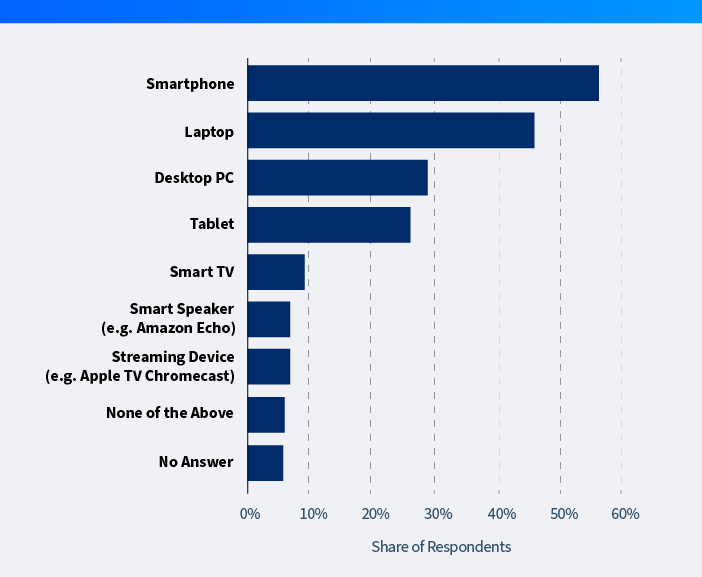Retail marketers today face the unique challenge of connecting their digital ad campaigns to offline sales lift. In this vertical, it’s key to create engaging campaigns that will earn online sales, offline sales, and build customer loyalty.
Read on to learn how retail marketing has evolved throughout the pandemic, what are the current retail trends, and how to drive results with your retail marketing.
The Changed Retail Marketing Landscape
Throughout the pandemic there’s been notable shifts across various retail verticals: online retail shopping, food ordering services, online grocery services, emerging shopping experiences like curbside pickup and buy now, pay later (BNPL) have all gained popularity, and fast. And in the last two years, overall retail growth has overcome pandemic setbacks and continued to increase.
Double-digit annual growth in retail sales in the US was evident pre-pandemic—24% in 2019 and 17% in 2018. Unsurprisingly, the uncertainty of the pandemic economy slowed retail spend in 2020. According to NFR’s State of Retail report, growth of retail sale slowed to 7% in 2020, but bounced back to 14% growth in 2021.
In 2022, worldwide retail sales are poised to grow 5% year-over-year (YoY) to exceed $27.33 trillion (USD). Although e-commerce spending growth is expected to slow considerably—due, in part, to the rebound of brick and mortar stores—the channel will still account for more than 20% of total global retail.
Retail Marketing Trends to Watch
With retail marketing evolving, it’s important to keep a pulse on trends in the industry. Current trends can inform many aspects of your marketing strategy, from what channels and formats you advertise with, to which targeting tactics you leverage in your campaigns.
Here are 4 key retail trends to keep in mind:
The rise of mobile commerce.
Desktop (including laptop) continues to be a primary device that consumers use for retail browsing and purchasing. But, mobile commerce is steadily growing. As consumers increasingly spend more time on their smartphones, it has become the most popular reported way of online shopping. In fact, in Canada, it’s now the most used device for online shopping.

The adoption of social shopping.
Social commerce provides users the ability to shop and buy, directly or indirectly, on social media platforms. As social media’s influence continues to increase, US social commerce is expected to reach $79.6 billion USD in 2025, accounting for 5.2% of US retail e-commerce sales.
The importance of collecting 1st-party data.
As the privacy landscape continues to evolve, retail brands are investing in ways to collect more robust 1st-party data, such as email address and first and last name. Data can be collected through initiatives such as SMS marketing, email marketing, and loyalty programs. Brands are increasingly using customer data to deliver more personalized and relevant promotions, resulting in better engagement, sales outcomes, and brand loyalty.
The rise of the customer experience.
Brands are finding new ways to make online shopping seamless for their customers. With increased online shopping behaviours, customers have fewer in-person touch points with products, making discovery more challenging. Many retail brands are investing in solutions, like implementing augmented reality (AR) technologies for virtual “try before you buy” experiences. This helps customers to better experience products online and reduces the barrier to purchase.
Drive Results With These Retail Marketing Strategies
With these emerging trends in mind, retail marketers can shift their strategies to align with customer expectations, and the goals of retailers. Here are 6 key strategies to consider:
1. Create a cross-channel marketing strategy to reinforce a seamless customer experience across the funnel.
People are spending more time on digital channels than ever before, especially on mobile devices. Update your campaign strategies to incorporate channels like video and audio to raise awareness while prospecting. Retarget off of video completion rates (VCR) or listen completion rates (LCR) with highly engaging channels, such as native and display to strengthen your branding play while keeping costs low.
2. Include social channels as part of your retargeting strategy.
Social commerce has gained traction for shoppers from discovery to purchase. To reach the consumers who are on social channels, start by implementing programmatic channels to capture prospects at scale. Then, leverage a retargeting strategy to funnel those prospects through social retargeting efforts. This creates a cohesive strategy that will meet potential consumers where they’re spending their time online.
3. Structure your messaging to meet consumer sentiments in a post-lockdown world.
Shoppers are excited to spend and treat themselves! Convey an empathic but personalized message that focuses on enjoyable experiences. Optimize for a seamless online-to-offline customer experience by incorporating creative messaging on popular solutions that gained popularity in the pandemic like click-and-collect, BNPL, mobile payments, and simple return processes.
4. Stay authentic in your messaging and position your brand as an ally to social change and sustainability.
Consumers rate authenticity as a key deciding factor when choosing what brands to purchase from. They’re increasingly focused on how their consumption impacts the world and are looking to support brands that share the same values. With e-commerce making it really easy for customers to try new brands, it’s important to tailor your messaging to engage your customer, build trust and brand affinity. Ensure your messaging is authentic and voices your brand’s solidarity with important social issues.
5. Look beyond proxy metrics to understand the real impact of your campaigns, and make adjustments.
Recent retail trends show that brand loyalty is being disrupted, with many consumers increasingly willing to try new brands. A key way to navigate this shift is to go beyond proxy metrics like impressions. Leverage brand lift, a tactic that helps quantify the impact of your upper funnel campaigns, and provides a picture of the consumer sentiment and brand affinity of people who have been exposed to your media.
6. Incorporate a footfall attribution study to understand store visitation patterns.
It’s more important than ever to understand how your digital campaigns are impacting in-store sales.
Footfall attribution (also known as foot traffic attribution) is a method used to relate campaign impressions or conversions to actual store visits. It helps you understand how your digital ads are contributing to the foot traffic at brick and mortar locations.
This measurement tactic can help you gather data to determine the offline impact of your ads. Incorporate a foot traffic attribution study to uncover store visitation patterns, determine the incremental impact of your campaigns, and measure cost per store visit.
The Future State of Retail Marketing
Today’s marketers can’t risk underestimating or overlooking the impacts that digital trends have had over the pandemic on the retail space. Consumers have adapted and evolved, and this trend is expected to continue.
The key to success for retail marketers is to leverage data-driven analysis to inform your future marketing strategies. You need to keep staying on top of changing consumer behaviours—that have forever changed—to yield the best retail advertising results for your brand.






